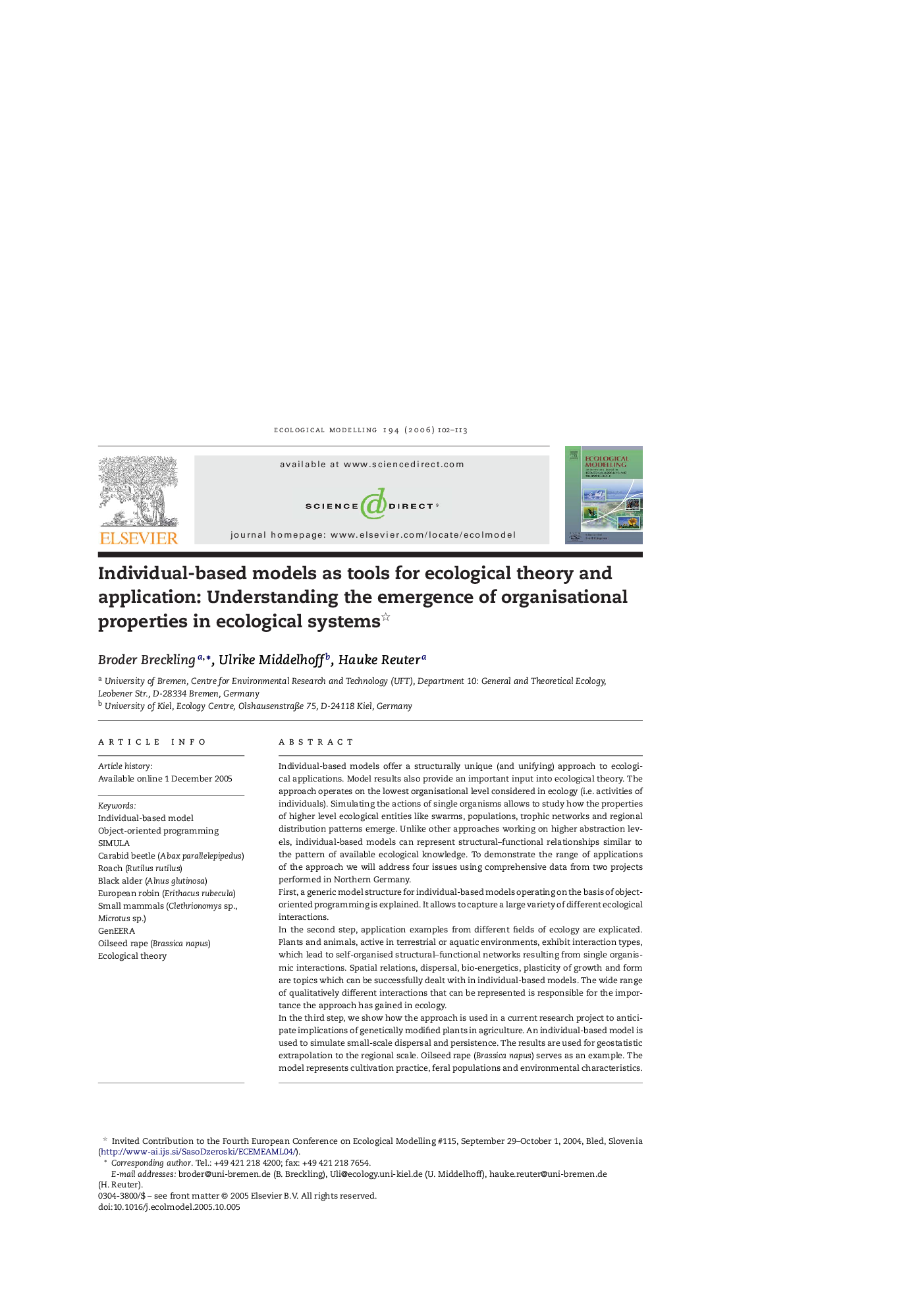| کد مقاله | کد نشریه | سال انتشار | مقاله انگلیسی | نسخه تمام متن |
|---|---|---|---|---|
| 4379183 | 1617565 | 2006 | 12 صفحه PDF | دانلود رایگان |

Individual-based models offer a structurally unique (and unifying) approach to ecological applications. Model results also provide an important input into ecological theory. The approach operates on the lowest organisational level considered in ecology (i.e. activities of individuals). Simulating the actions of single organisms allows to study how the properties of higher level ecological entities like swarms, populations, trophic networks and regional distribution patterns emerge. Unlike other approaches working on higher abstraction levels, individual-based models can represent structural–functional relationships similar to the pattern of available ecological knowledge. To demonstrate the range of applications of the approach we will address four issues using comprehensive data from two projects performed in Northern Germany.First, a generic model structure for individual-based models operating on the basis of object-oriented programming is explained. It allows to capture a large variety of different ecological interactions.In the second step, application examples from different fields of ecology are explicated. Plants and animals, active in terrestrial or aquatic environments, exhibit interaction types, which lead to self-organised structural–functional networks resulting from single organismic interactions. Spatial relations, dispersal, bio-energetics, plasticity of growth and form are topics which can be successfully dealt with in individual-based models. The wide range of qualitatively different interactions that can be represented is responsible for the importance the approach has gained in ecology.In the third step, we show how the approach is used in a current research project to anticipate implications of genetically modified plants in agriculture. An individual-based model is used to simulate small-scale dispersal and persistence. The results are used for geostatistic extrapolation to the regional scale. Oilseed rape (Brassica napus) serves as an example. The model represents cultivation practice, feral populations and environmental characteristics.The fourth and final step discusses epistemological implications of individual-based models. It is concluded that a successful application of the approach requires detailed biological information about the represented species. This makes a leading involvement of field ecologists essential for model development. On the other hand, it also opens a theoretical access how to connect quantitative and qualitative aspects of cause–effect chains in ecology across different hierarchical levels. These aspects are discussed in relation to possible limitations of the approach.
Journal: Ecological Modelling - Volume 194, Issues 1–3, 25 March 2006, Pages 102–113